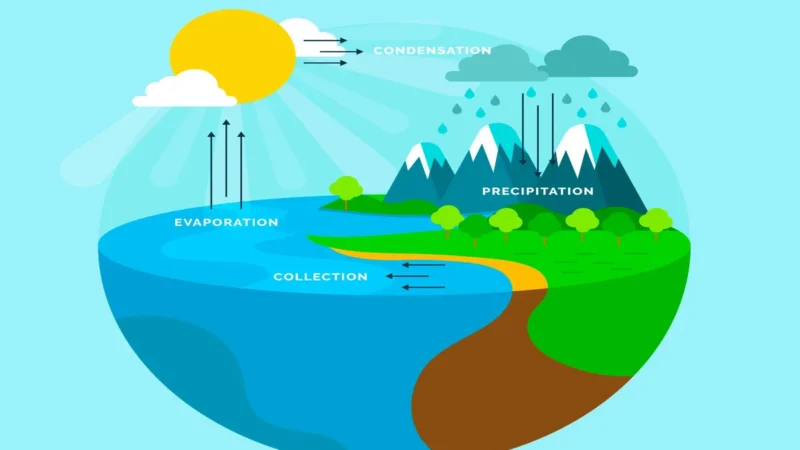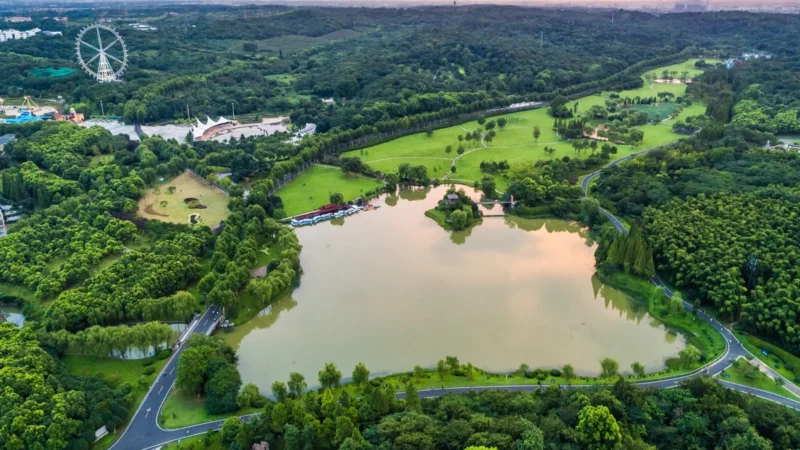Earth’s biodiversity: The Importance of Earth’s Biodiversity and How to Save It

What is biodiversity?
Biodiversity is all the living things on our planet – from the smallest bacteria to the largest plants and animals. So far, we have identified around 1.6 million species but that is probably only a small fraction of the forms of life on Earth. Biodiversity on Earth is the result of 4.5 billion years of evolution, increasingly influenced by humans.
Biodiversity can be measured at different levels, such as genetic diversity, species diversity, and ecosystem diversity. Genetic diversity refers to the variation of genes within a species or a population. Species diversity refers to the number and abundance of different species in a given area. Ecosystem diversity refers to the variety of habitats, communities, and ecological processes that occur in different regions of the world.
Why is biodiversity important?
Biodiversity is important for many reasons, both for humans and for nature. Biodiversity provides us with many benefits, such as food, medicine, clothing, fuel, and materials. Biodiversity also supports essential ecosystem services, such as pollination, nutrient cycling, water purification, soil formation, climate regulation, and natural disaster prevention. Biodiversity also enriches our lives with cultural, aesthetic, spiritual, and recreational values.
Biodiversity is also important for the resilience and stability of ecosystems. Biodiversity helps ecosystems to adapt to changing environmental conditions, such as climate change, and to recover from disturbances, such as fires or floods. Biodiversity also reduces the risk of diseases and pests by maintaining a balance of predators and prey, hosts and parasites.
What are the threats to biodiversity?
Biodiversity is facing many threats due to human activities, putting the Earth’s magnificent biodiversity at risk. Some of the major threats are:
- Habitat loss and fragmentation: The conversion, degradation, or destruction of natural habitats by agriculture, urbanization, mining, logging, or infrastructure development reduces the area and quality of habitats for many species. Habitat fragmentation also isolates populations and reduces their genetic diversity and viability.
- Overexploitation: The unsustainable use of natural resources for human consumption or trade depletes the populations of many species. Examples of overexploitation include overfishing, hunting, poaching, and harvesting of timber or medicinal plants.
- Invasive species: The introduction of non-native species to new areas by human activities can have negative impacts on native species and ecosystems. Invasive species can compete with, prey on, or transmit diseases to native species, altering the ecological balance and reducing biodiversity.
- Pollution: The release of harmful substances into the environment by human activities can affect the health and survival of many species. Examples of pollution include pesticides, fertilizers, plastics, oil spills, heavy metals, radioactive waste, or greenhouse gases.
- Climate change: The increase in global temperature and changes in precipitation patterns due to human-induced greenhouse gas emissions can alter the distribution and abundance of many species. Climate change can also affect the timing of biological events, such as flowering or migration, disrupting the interactions between species. Climate change can also increase the frequency and intensity of extreme weather events, such as droughts or floods.
How can we save biodiversity?
Saving biodiversity requires urgent and coordinated actions from all levels of society. Some of the actions that we can take are:
- Protecting and restoring habitats: Establishing and managing protected areas that conserve representative samples of biodiversity and ecosystem services is one of the most effective ways to save biodiversity. Restoring degraded habitats can also enhance biodiversity and ecosystem functions.
- Promoting sustainable use and consumption: Reducing our demand for natural resources and choosing products that are produced in an environmentally friendly way can help to reduce the pressure on biodiversity. For example, we can support sustainable fisheries or agriculture that minimize habitat loss and pollution.
- Controlling invasive species: Preventing the introduction and spread of invasive species by implementing strict biosecurity measures and monitoring programs is crucial to protect native biodiversity. Eradicating or controlling invasive species that have already established can also reduce their impacts on native species and ecosystems.
- Reducing pollution: Adopting cleaner technologies and practices that minimize the emission of pollutants into the environment can help to improve the quality of habitats for biodiversity. For example, we can reduce our use of fossil fuels or plastics or dispose them properly.
- Mitigating and adapting to climate change: Reducing our greenhouse gas emissions by switching to renewable energy sources or improving energy efficiency can help to slow down global warming and its effects on biodiversity. We can also help biodiversity to cope with climate change by enhancing their adaptive capacity, such as by maintaining genetic diversity, facilitating migration, or creating climate refuges.
Biodiversity is the variety of life on Earth that provides us with many benefits and supports the functioning of ecosystems. Biodiversity is under threat from human activities, such as habitat loss, overexploitation, invasive species, pollution, and climate change. Saving biodiversity requires urgent and coordinated actions from all levels of society, such as protecting and restoring habitats, promoting sustainable use and consumption, controlling invasive species, reducing pollution, and mitigating and adapting to climate change. By saving biodiversity, we are also saving ourselves and our future.
FAQS
1. Why is Earth’s biodiversity important?
Earth’s biodiversity is crucial because it provides a wide range of ecosystem services essential for human survival. It helps regulate climate, purify air and water, pollinate crops, and provide us with food, medicine, and raw materials. Biodiversity also contributes to cultural and recreational value, making life more enjoyable and diverse.
2. What are the main threats to Earth’s biodiversity?
The primary threats to biodiversity include habitat loss and fragmentation, pollution, overexploitation of natural resources, invasive species, and climate change. These factors can lead to the extinction of species and disruption of ecosystems, posing significant challenges to biodiversity conservation.
3. How can individuals help save Earth’s biodiversity?
Individuals can make a difference by adopting sustainable practices such as reducing waste, conserving water, and supporting responsible consumption. Additionally, supporting and participating in conservation organizations, advocating for environmental protection policies, and spreading awareness about biodiversity’s importance are effective ways to contribute to its preservation.
4. What is the role of protected areas in biodiversity conservation?
Protected areas, such as national parks and wildlife reserves, play a crucial role in conserving biodiversity. They provide safe havens for numerous species, allowing them to thrive without the threat of habitat destruction or hunting. These areas also serve as valuable locations for scientific research and environmental education.
5. How can we address the challenges of climate change to protect biodiversity?
To address the impact of climate change on biodiversity, we must reduce greenhouse gas emissions by transitioning to clean energy sources, promoting energy efficiency, and adopting sustainable land-use practices. Additionally, we can implement climate-smart conservation strategies that help species adapt to changing conditions and protect habitats that serve as climate refuges for vulnerable species.


